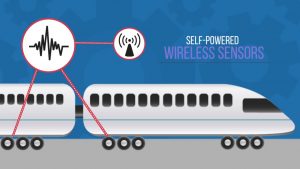 Hitachi Rail has completed the acquisition of Perpetuum, a British rail technology firm that continues to pioneer digital solutions that significantly improve train reliability and performance.
Hitachi Rail has completed the acquisition of Perpetuum, a British rail technology firm that continues to pioneer digital solutions that significantly improve train reliability and performance.
“Hitachi is focused on expanding its digital innovation and sustainability offers, and the acquisition of Perpetuum achieves both goals. We’ll be able to improve the service to our customers using Perpetuum’s data-driven insights,” Andrew Barr, Group CEO, Hitachi Rail said.
Perpetuum’s digital solutions will further improve, optimise and expand the application of the technology across Hitachi’s global transport portfolio.
The integration of digital technology has a major role to play in enhancing the effectiveness and efficiency of operations, train service and maintenance. The acquisition follows the global mobility company’s strategy of expanding its digital capabilities, including Hitachi’s Lumada platform that uses AI and Internet of Things to turn data into actionable business insights.
Perpetuum’s wireless sensors spot faults remotely, operating on a continuous basis while trains are running. This calculates the health status of the components, identifying potential issues to be fixed before they delay passengers’ journeys. None of over 3,000 carriages that are fitted with the application have ever had critical components fail in service, Hitachi says.
The acquired company has customers across three continents, but this acquisition is likely to drive further growth in the application and scope of their technology. Hitachi’s global portfolio of projects, particularly in the Middle East and the Americas, includes a growing number of turnkey schemes, in which the whole transport and infrastructure systems are delivered. Some these schemes will also see Hitachi manage the passenger operations of the newly completed transit systems.
While Perpetuum’s offering has largely focused on train bogies, the technology has the potential to provide actionable insights wherever it is generated on the train. It could also help with monitoring infrastructure assets such as signalling equipment, tracks and even railway structures, ultimately leading to a more reliable service for customers.
Once installed on trains, Perpetuum’s self-powering sensors detect on-board vibrations and send back real-time data about the performance of critical train parts, faster and more accurately than traditional condition-monitoring approaches. Combining this information with artificial intelligence-led analytical tools not only improves the performance of the railway, but also helps to make it more sustainable.
Share on:



